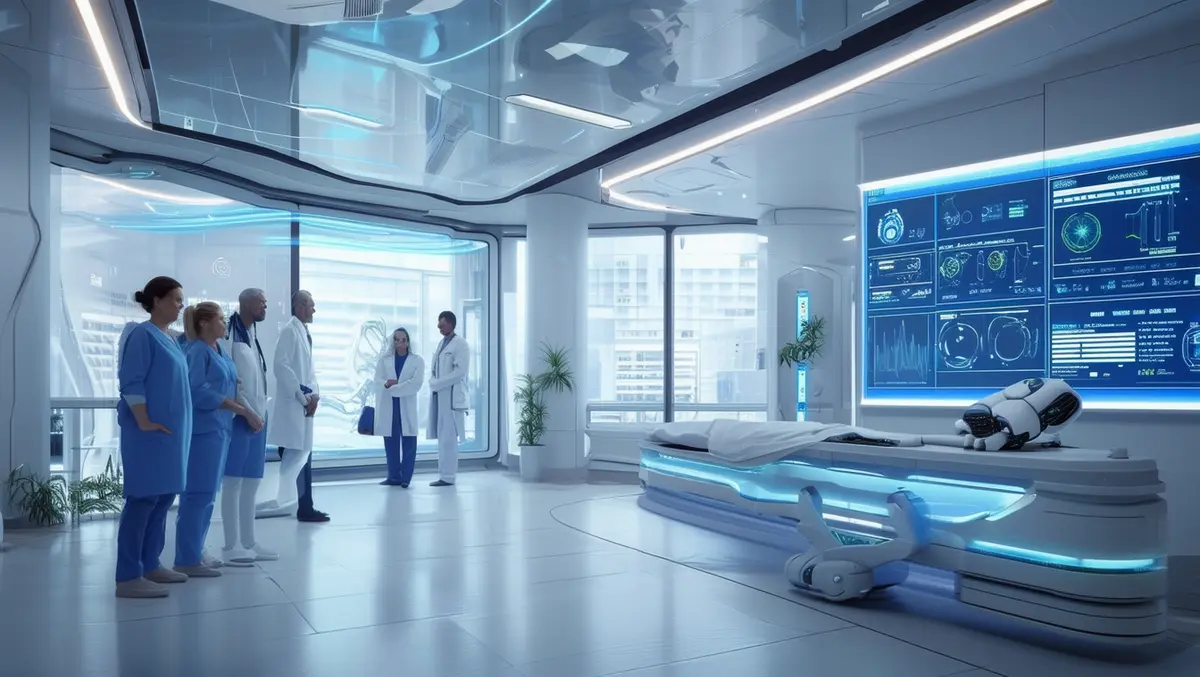
How AI-powered automation is enabling the future of Australia’s patient care
Today's healthcare systems are under immense pressure to deliver quality and efficient patient care while navigating financial and operational constraints. Despite this, medical leaders are betting big on healthcare automation. The global healthcare automation market was valued at $38.6 billion in 2023, and the market is projected to reach $94 billion by 2033.
Why the bullish outlook? Investing in healthcare automation isn't just a cost-cutting exercise; it's a strategic move. AI-powered automation is a long-term investment that will increase patient and clinician satisfaction, improve clinical workflows, and strengthen the bottom line. For healthcare leaders, adopting AI-powered automation is the key to staying ahead and ensuring return on investment.
So, how is AI-powered automation enabling the future of Australia's patient care?
Addressing administrative overload
A recent survey reveals that Australian knowledge workers are feeling the highest levels of burnout globally, with a staggering 82% of the 1,100 respondents reporting they feel burnt out. In healthcare, employee burnout and reduced operational efficiency are due to administrative overloads. This burden comes in many forms, from documentation, scheduling, billing, and claims processing – all-consuming a considerable amount of time and, importantly, detracting from patient care.
By implementing AI-powered automation, healthcare providers can significantly reduce the time spent on these repetitive, manual tasks, allowing healthcare professionals to focus more on patient care and less on paperwork.
Optimising patient access and care delivery
AI-powered automation enhances patient access by streamlining the onboarding process, scheduling, referrals management and patient outreach. It plays an important role in care delivery by automating documentation, identifying care gaps, triaging reports, and facilitating remote visits and virtual monitoring. These automated processes not only improve the efficiency of care delivery but also ensure that patients receive timely and accurate medical attention.
For example, at Gold Coast Hospital, clinicians use their smartphone to take high-quality images that are instantly uploaded to patient records via an app, enabling quick and accurate assessments. This reduces manual administrative tasks, allowing clinicians to spend more time on direct patient care. Other automation solutions can integrate seamlessly with other electronic health record systems, enabling smoother coordination between different departments and improving overall patient experience.
Advancing medical research and personalised treatment
Generative AI is particularly beneficial in healthcare for analysing volumes of medical data, helping clinicians improve their diagnostic and treatment choices. The technology can also help identify patterns that may go unnoticed by human doctors. AI does so by examining a patient's medical history, genetic composition, and symptoms. These capabilities can lead to better outcomes in disease diagnosis, earlier detection of illnesses, and more precise treatment plans.
AI-powered automation is transforming the healthcare industry by addressing administrative burdens, enhancing patient care delivery, and advancing medical research. By leveraging these technologies, healthcare providers can optimise resources, improve operational efficiency, and deliver higher-quality care to patients. The future of patient care lies in the seamless integration of AI and automation, enabling healthcare providers to meet the evolving needs of patients effectively and efficiently.
The topic of how AI-powered automation is supporting the future development of industries such as healthcare will be addressed at UiPath Business Automation Summit events in Sydney on July 16 and Melbourne on July 18.

